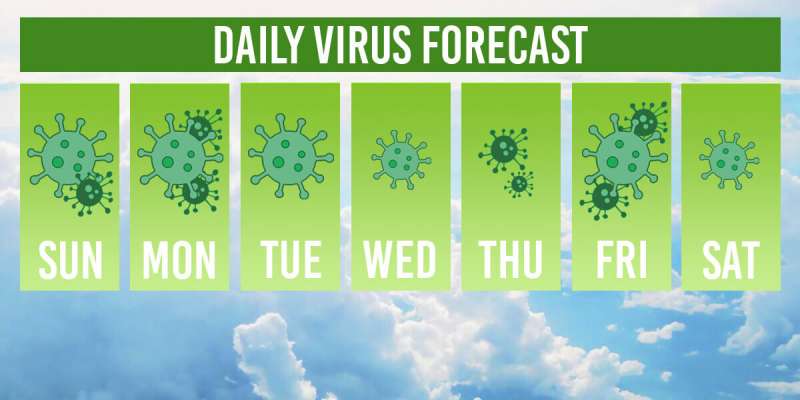New model can forecast daily COVID-19 cases

Currently, there are more than 8.7 million confirmed COVID-19 cases and roughly a quarter million deaths nationally, according to the Johns Hopkins University, making this pandemic one of the worst ever to hit the United States.
If there was something, even a small action, to keep that number from growing, wouldn't that be wonderful? What if we could predict the future and see what is going to happen with the spread of COVID? That something is what USC Viterbi Professor Roger Ghanem of the Civil and Environmental department of Engineering and his doctoral student, Xiaoshu Zeng, are trying to do with their research.
Ghanem, Gordon S. Marshall Professor of Engineering Technology, and Zeng hope to help contain the spread of the virus by looking at recent surges in COVID-19 cases. They have developed a model to make reliable predictions and forecast the number of daily new COVID-19 cases for the next week for individual states and the entire U.S., allowing scientists in the impacted areas to advise policymakers to take mitigating actions such as social distancing and mask mandates.
"We cannot really predict the future, but using science and statistics is the best you can get at making an informed guess," Ghanem said.
Over the summer, the pair published an article in Computational Mechanics about their COVID-predicting model.
Here's how their computational model works.
The researchers take the data of daily new COVID-19 cases from the previous seven to 10 days and input them into the model, which uses mathematics and algorithms to process data. After running it through the system, the model predicts the number of COVID cases for a given area over the next week to 10 days.
Ghanem and Zeng use one significant algorithm, the switching Kalman Filter (sKF), which implements smaller models embedded inside to show the growth rate, which can be linear or quadratic. The linear model has a much smaller growth rate, meaning there is steady growth but no rapid increase. However, the quadratic model has a higher growth rate, meaning the number cases increases very fast and rapidly. The algorithm will have a weighted combination of linear and quadratic behaviors that will reflect which growth rate is dominant during the observation and predictions periods. From this, they can estimate the number of cases on a certain day. This prediction can be done within a few minutes-depending on the computer used.
"Once a policy is applied, we will observe the daily new cases for a certain period of time and see if there are any switches between the linear and quadratic growth models. If there is a switch from predominantly quadratic to predominantly linear growth, then that is a good sign that the current policies are effective," Zeng said.
If the graph switches to a rapid growth rate or remains quite high, policymakers need to take more drastic actions to contain the spread of the virus.
The results of their data can influence policymakers' decision-making on ways to prevent the spread of the virus and ascertain if those actions are working or not, conveying key information for state and national governmental agencies. Their model can also guide policy interventions, such as lockdowns, quarantines, mandated masks, or stricter physical distancing protocols.
"This information is very useful because several factors may be common across states thus allowing decision makers to learn from other geographical locations," Zeng said.
In addition to COVID, Ghanem and Zeng said their model could predict future rates of influenza and other infectious diseases, as long as researchers have access to current and previous data.
Ghanem hopes this model can provide the country with a new tool to help decrease the number of COVID cases.
"Now that the work is published, perhaps public health professionals and epidemiologists will be able to better scrutinize it, assess its credibility, and hopefully add it to the set of capabilities at their disposal for treating future incidences," he said.
More information: Xiaoshu Zeng et al. Dynamics identification and forecasting of COVID-19 by switching Kalman filters, Computational Mechanics (2020). DOI: 10.1007/s00466-020-01911-4




















